Making sangria takes 10 minutes and lasts for hours, making it an ideal drink for gatherings and brunch. It's similar to a wine punch and served cold. This version is fruitier and lighter, a twist on the original red wine sangria that's just as easy to assemble. It's versatile regarding the fruit you can use and pairs very well with yellow and orange fruit.
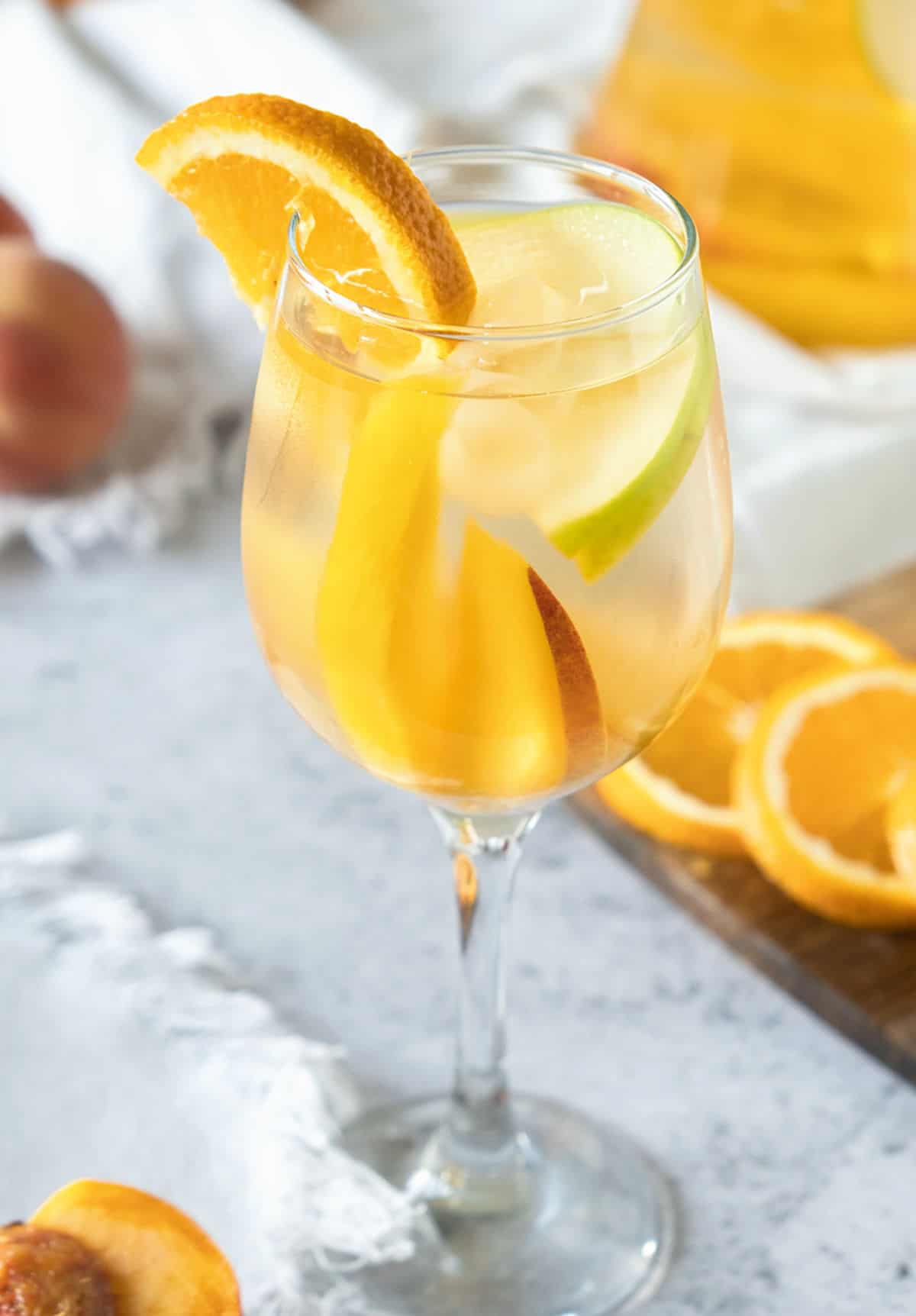
Fruit and wine
If you like white wine and Summer fruit and have never tried this refreshing sangria yet, you're in for a beautiful surprise.
It's a quick and easy wine drink with fruit, similar to wine punch. The effort is pretty minimal, and the results are fresh, fruity, and boozy. We are big fans here and already have a nice collection of sangria recipes, like apple cider sangria and rosé wine sangria.
White translates to blanca in Spanish, which would be sangría blanca. Some countries call it clericó (Argentina, for example, where I live), and we have no idea where that originated, as the word has no meaning per se.
- Very easy to make: cutting fruits and mixing liquids in a pitcher. That's all the work needed to make a fabulous white sangria.
- Crowd-pleaser: kids aside, this drink is a hit among adults, especially for hot summer days and informal gatherings. When feeding a large party, we double or triple this recipe and use a glass drink dispenser to serve it.
- Make ahead: the fruit will macerate more with every passing hour, but you can make sangria up to 12 hours before serving it.
- Versatile: though some type of fruit are traditional like citrus fruits, you can make a sangría with whatever you have around as long as you like it with white wine.
FAQ
That's up to your taste. Both are fruity and sweet, but classic red sangria has more body and makes more of a statement due to the type of wine it uses. White sangria is lighter and less bold.
A dry and crisp white wine is better for sangria blanca than a late harvest or sweeter one. You'll be sweetening the drink, so we recommend pinot grigio and sauvignon blanc. But experiment with your favorite ones and adjust the sweetener to your taste.
White sangria can have an additional liquor like apricot brandy or peach schnapps. We also use triple sec or an orange liquor like Cointreau or Grand Marnier, which are more easily available. That said, you can omit this ingredient and still make a fantastic sangria!
Yes, you can. Though sangría is made up to 12 hours before serving, you can serve it almost immediately. It won't have the fruity flavor it acquires after hours of fruit slices macerating, but it'll still be a great wine drink. Find your own sweet and fruity spot. You shouldn't stop making it because you don't have hours to let it stand.
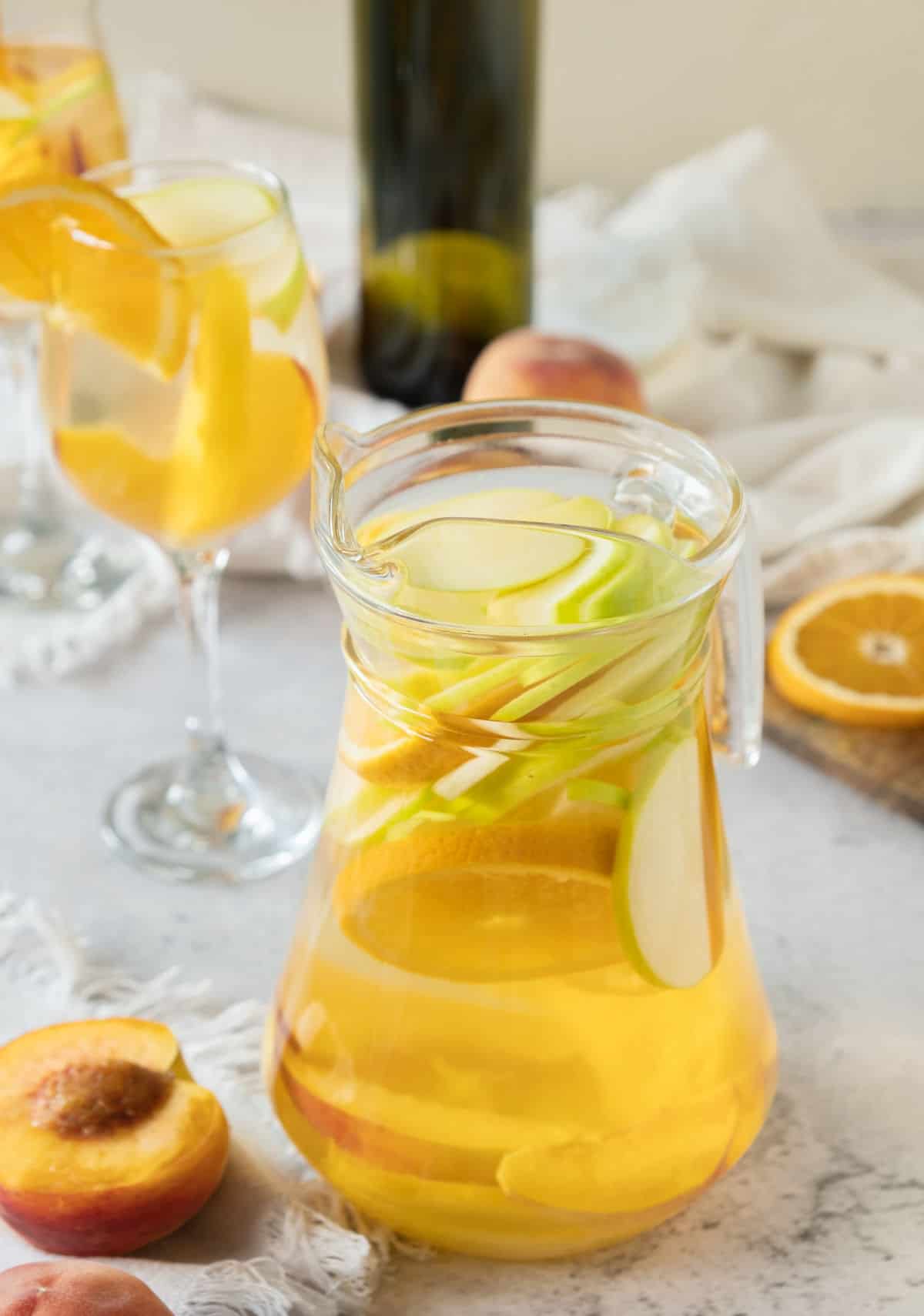
Ingredient Notes
Quantities are listed in the recipe card toward the end of this post. The Ingredients page has more details and lists the brands I use.
- White wine: Use your favorite. It can be dry or sweetened (late harvest). Depending on your choice, increase or decrease the amount of syrup or sugar. Use a Spanish red wine (we love Rioja wine) for a more authentic sangria.
- Fruit: orange, peach, apple and mango. See below for variations.
- Liquor: peach schnapps (apricot brandy), triple sec, or orange liqueur. They all work, and you can omit them if not available. But they add another layer of flavor that's very interesting.
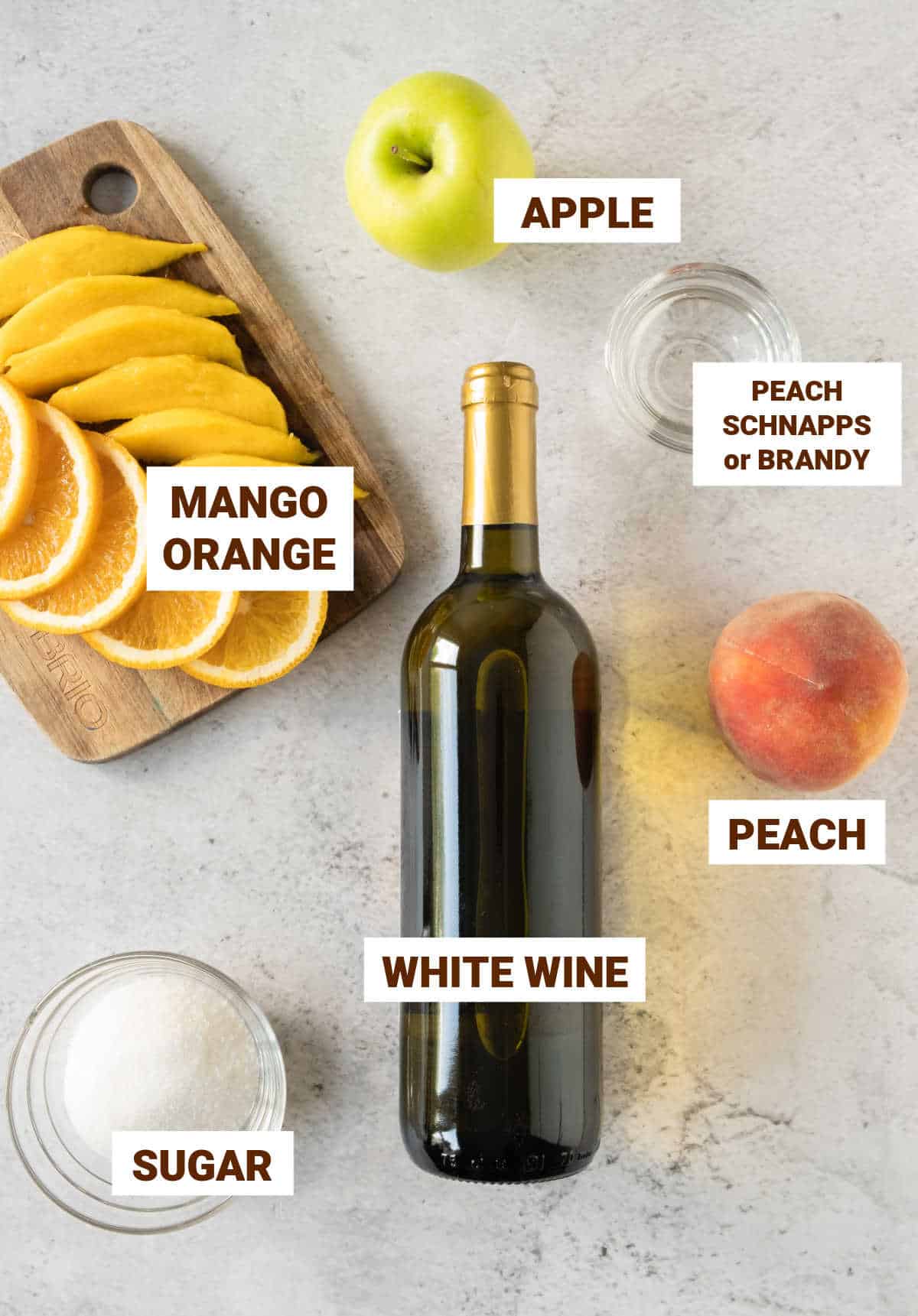
Variations
- Different fruits: Use grapes, pineapple, passionfruit, tangerines, or nectarines.
- Sweetener: Use honey or fruit syrup instead of sugar for a unique flavor. Or use brown sugar for a more caramel tone.
- Ginger ale or lemon-lime soda like 7UP, club soda, or sparkling water: it's an optional ingredient if you want a slightly fizzy drink. It's perfect if you want to omit or don't use the extra liquor. We use it for the traditional sangria recipe.
- Herbs: add a modern twist with chopped fresh mint, thyme, or basil. Start small so it doesn't overpower the rest of the ingredients.
How to make white sangria
- Orange, peach and apple: use them unpeeled and sliced.
- Mango: peeled and sliced.
- Diced fruit: it's another alternative. We often do this and eat the boozy fruit pieces as we drink it.
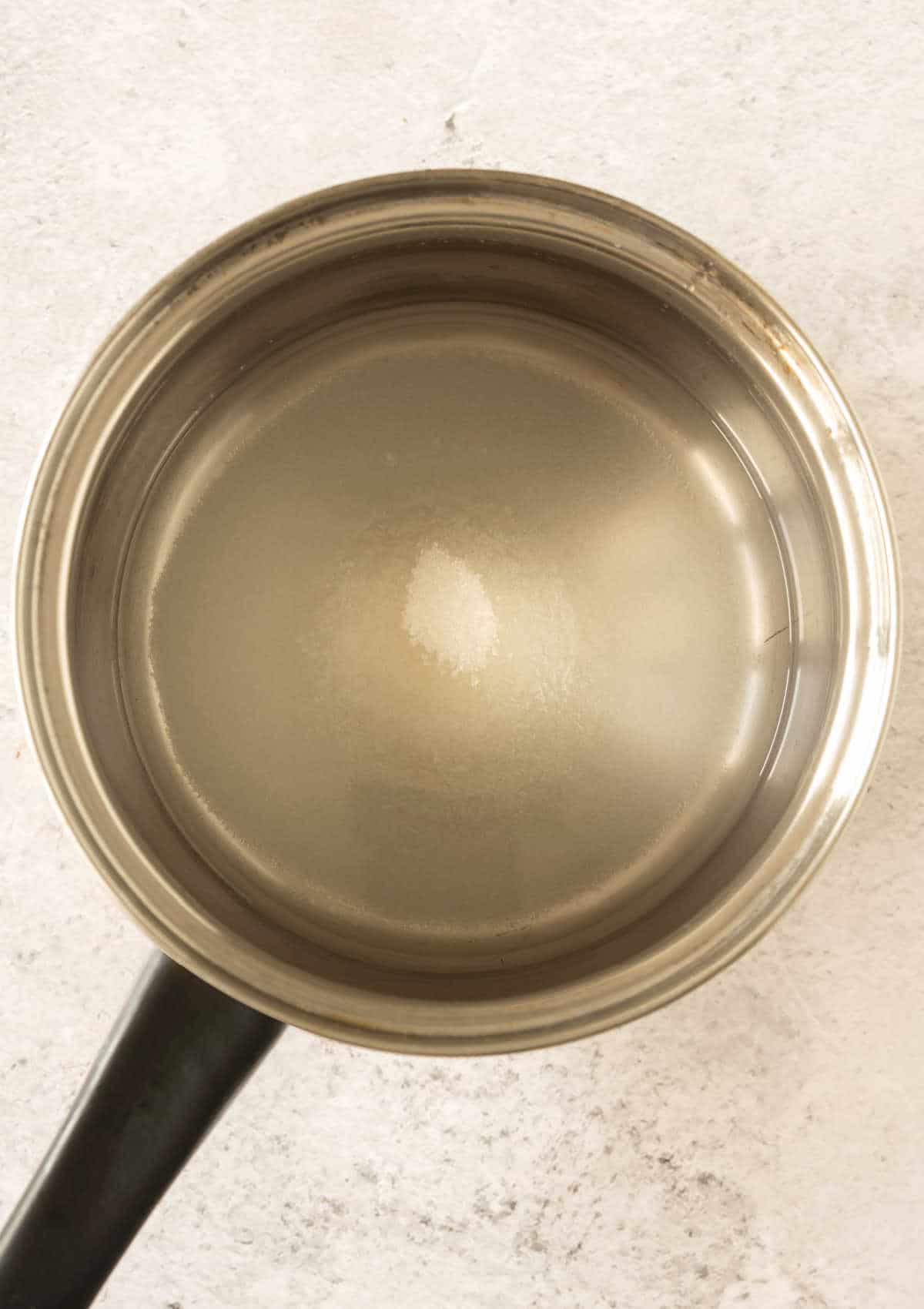
- Sweetener: Using a simple sugar syrup is better than adding granulated sugar, as it blends faster with the wine and doesn't pool at the bottom of the pitcher. But you can use regular sugar.
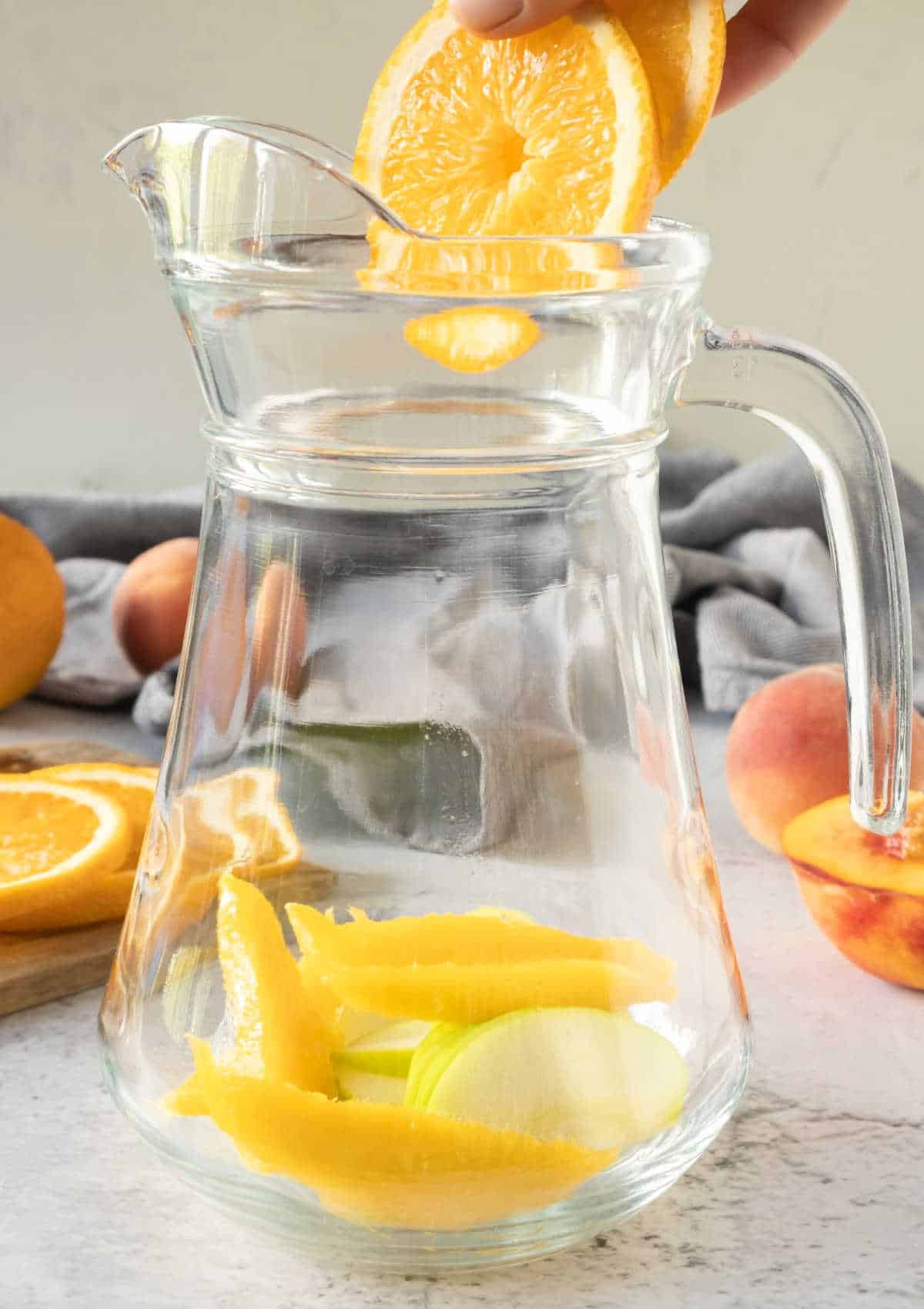
- Slice or dice the fruit and add half to the pitcher you'll be using with some ice cubes.
Vintage Kitchen Tip
Don't add too much fruit from the start, as you might run out of pitcher space for the wine after you add ice. The same goes for the syrup and liquor. Stir, taste and adjust. Remember that the fruit will macerate with every passing hour, and the sangria flavor will turn fruitier.
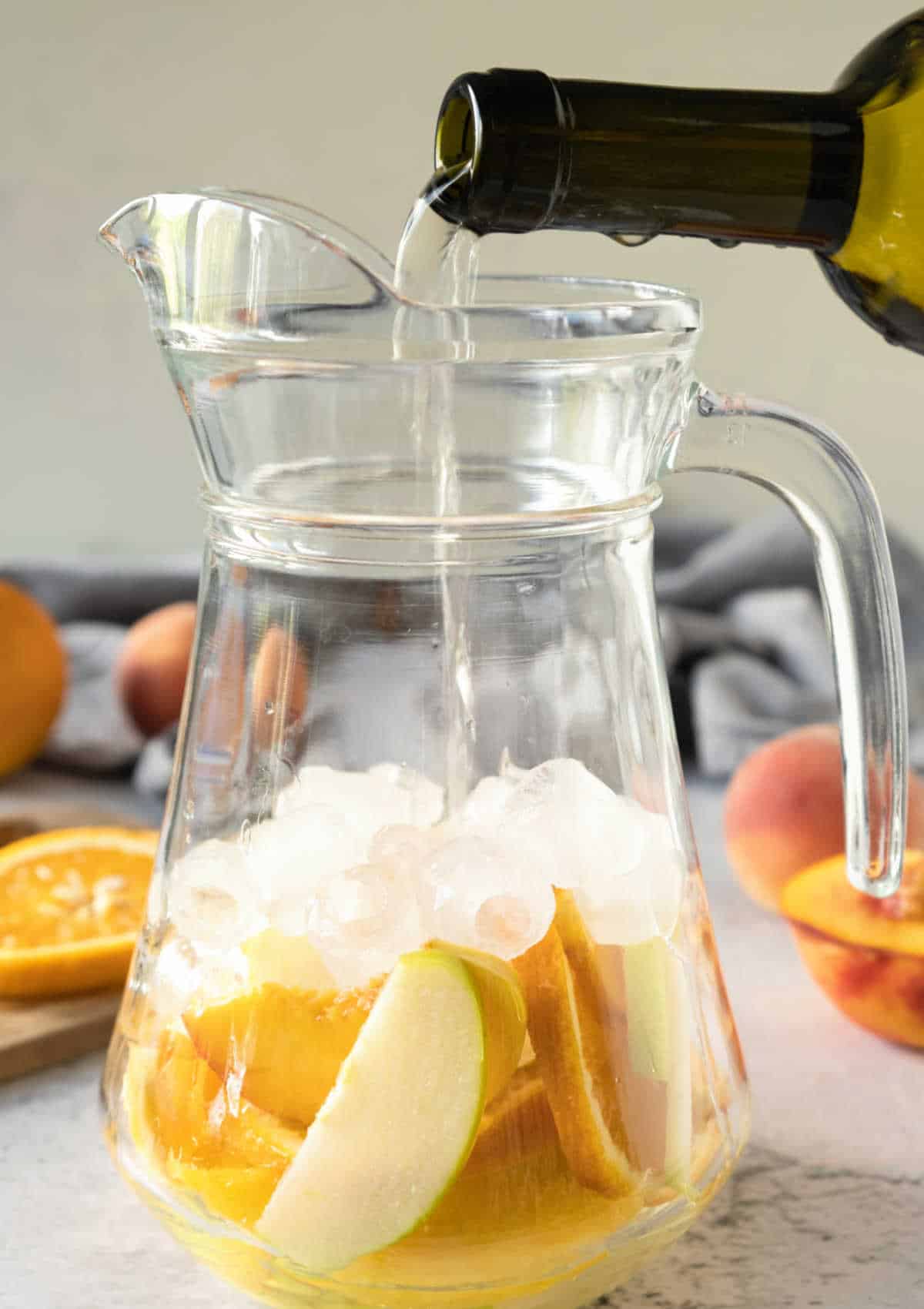
- Add the whole bottle of white wine first and stir. Then add some ice.
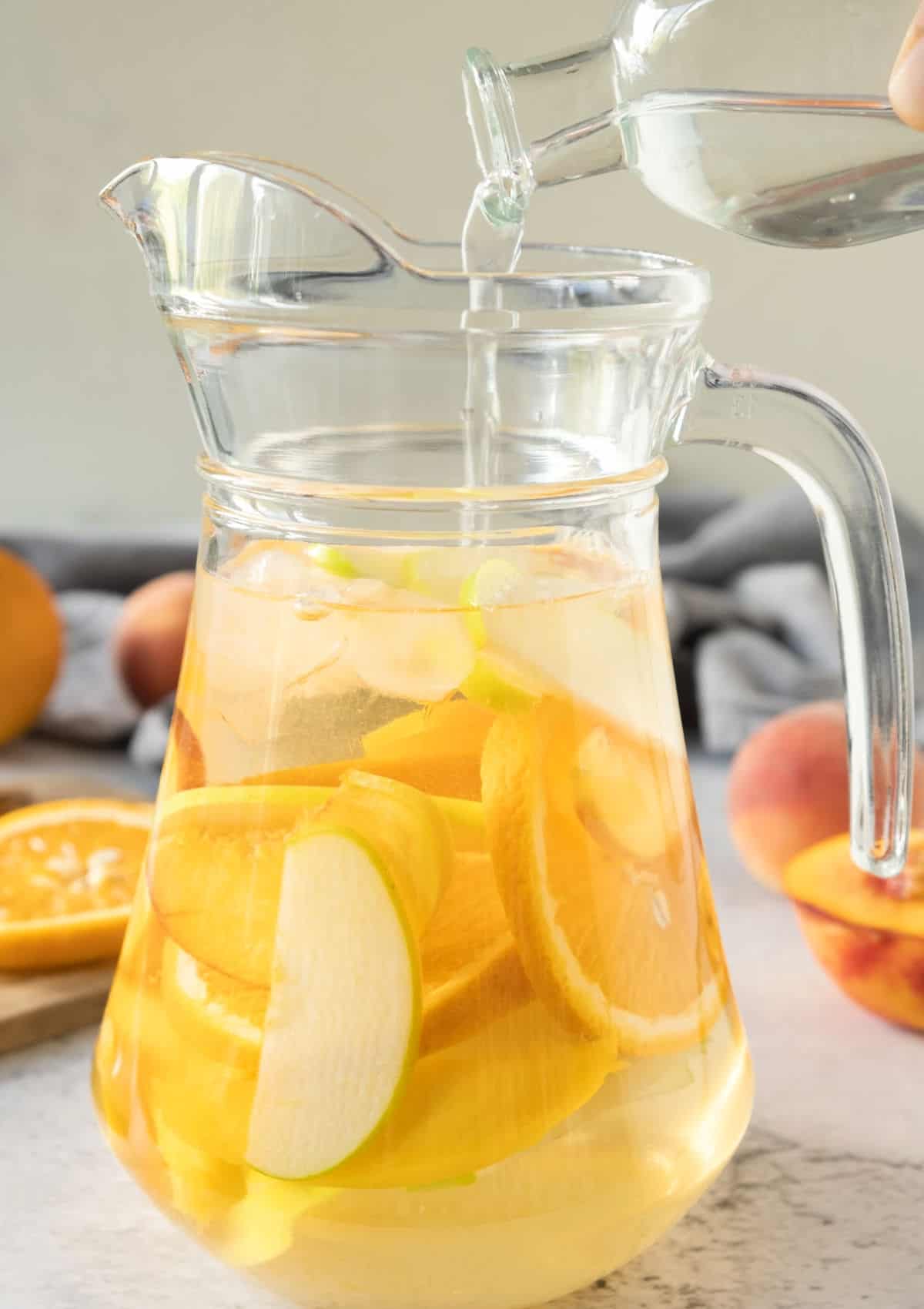
- Sweeten it with the prepared syrup and add the brandy or liquor of choice. Pour small amounts at first, stir, taste, and adjust. Add more fruit and ice cubes and serve, or let macerate for a few hours.
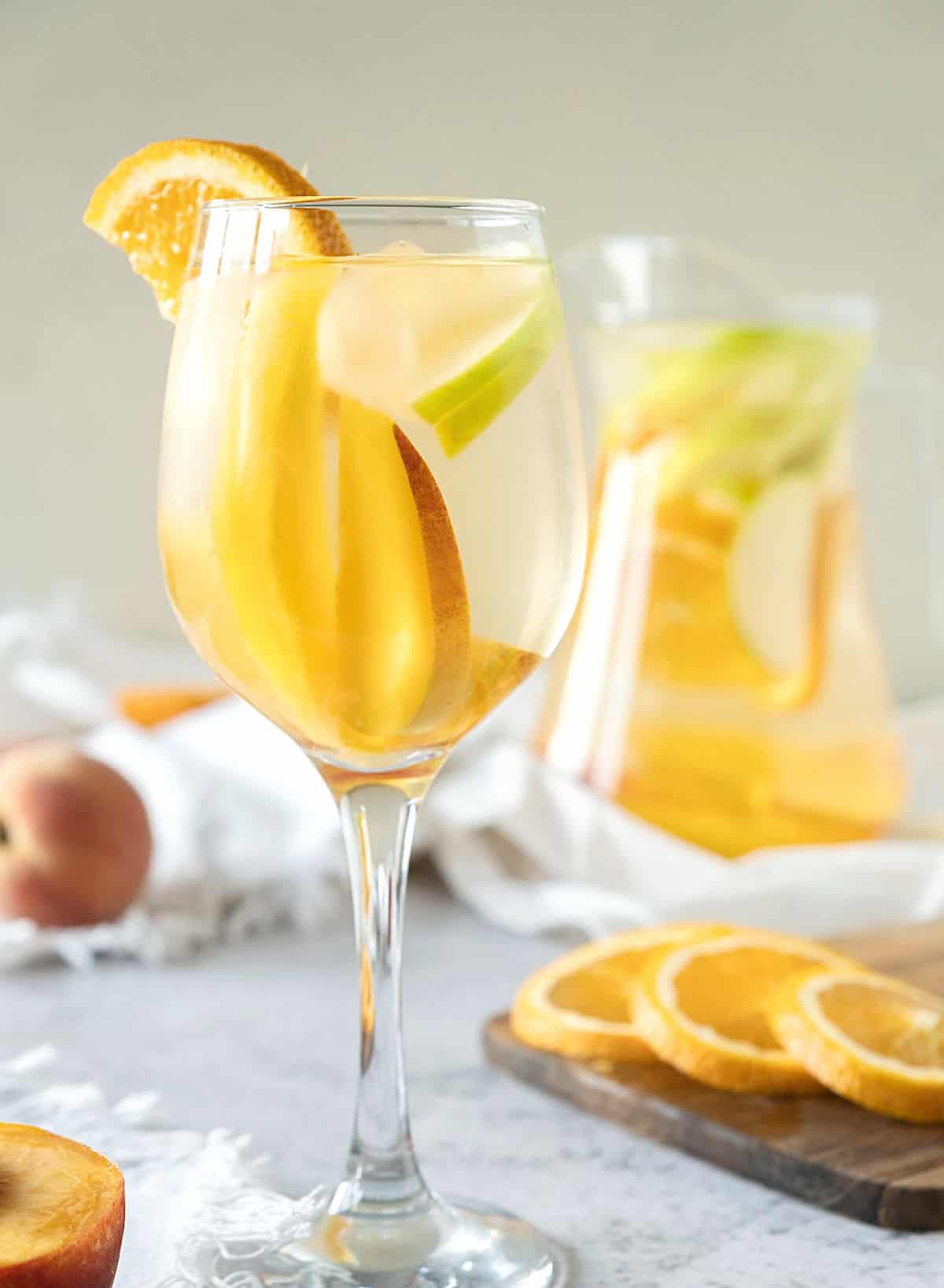
Storage
- Without the fruit: Use a sieve to drain the liquid and pass it to a sealed jar or bottle. Refrigerate the sweet wine, but discard the fruit (or eat it). This is my first recommendation if storing it for a few days. Fruit ferments quickly, and there's a good chance the sangria was left outside or at room temperature before you store leftovers. So the fruit will already be heavily macerated.
- With fruit: if you store it with fruit because you'll be drinking it again soon, smell and taste it before serving to ensure it's not fermented.
- An airtight container, mason jar, or bottle will seal in the wine mixture and help preserve it.
Before you go
If you made this recipe and loved it, you can comment below and leave a five-star ⭐️ review. Also, if you had issues, let me know so we can troubleshoot together.
You can also subscribe to our FREE email series 'Baking the Best' and our regular newsletter. Or follow and save my recipes on Pinterest.
As an Amazon Associate, I earn from qualifying purchases. Read my disclosure policy.

Easy White Sangria (10-minute wine recipe)
Ingredients
Simple syrup:
- ⅓ cup sugar
- ⅓ cup water
For the sangria:
- ½ orange with rind
- ½ medium apple, unpeeled
- ½ mango, peeled
- 1 large peach, unpeeled
- 1 bottle dry white wine, cold. I use an average 750ml bottle
- ¼ cup peach schnapps or apricot brandy
- orange juice from half an orange
- club soda or sparkling water, optional, I don't normally use it
- ice cubes
Instructions
- Don't add too much fruit from the start, as you might run out of pitcher space for the wine after you add ice.
- You can use sugar and stir it with the rest of the ingredients. Or use a simple sugar syrup that can be made ahead. The syrup dissolves much better and is what we use.
Make the simple syrup:
- In a small saucepan, combine ⅓ cup sugar with ⅓ cup water. Stir to moisten and cook over medium heat, without stirring, until it breaks into a boil. Remove and let cool completely. Keep refrigerated in an airtight jar or bottle. It keeps almost indefinitely.
For the sangria:
- Have a large pitcher (8 cups or more) ready.
- Slice ½ orange with rind, ½ medium apple, ½ mango and 1 large peach. Add half of them to the pitcher and some ice cubes.
- Add 1 bottle dry white wine, ¼ cup peach schnapps or apricot brandy and orange juice from half an orange. Stir a few times.
- Add about ¼ cup of simple syrup or sugar. Stir well, especially if using granulated sugar. It needs to dissolve completely. Add more ice cubes and club soda or sparkling water (if using) to almost fill the pitcher. Add more ice and club soda to almost fill the pitcher.
- Stir the sangria and check the sweetness. Add more syrup if needed, and take into account that the fruit will release juice with the passing hours.
- Serve in glasses with fruit slices.
Notes
Without the fruit: Use a sieve to drain the liquid and pass it to a sealed jar or bottle. Refrigerate the sweet wine, but discard the fruit (or eat it). This is my first recommendation if storing it for a few days. Fruit ferments quickly, and there's a good chance the sangria was left outside or at room temperature before you store leftovers. So the fruit will already be heavily macerated.
With fruit: if you store it with fruit because you'll be drinking it again soon, smell and taste it before serving to ensure it's not fermented. Variations:
Use different fruits, like grapes, pineapple, passionfruit, tangerines or nectarines.
Sweetener: Use honey or fruit syrup instead of sugar for a unique flavor. Or use brown sugar for a more caramel tone.
Ginger ale, club soda, or sparkling water are optional if you want a slightly fizzy drink. It's perfect if you want to omit it, like I do.


Rate and review this recipe